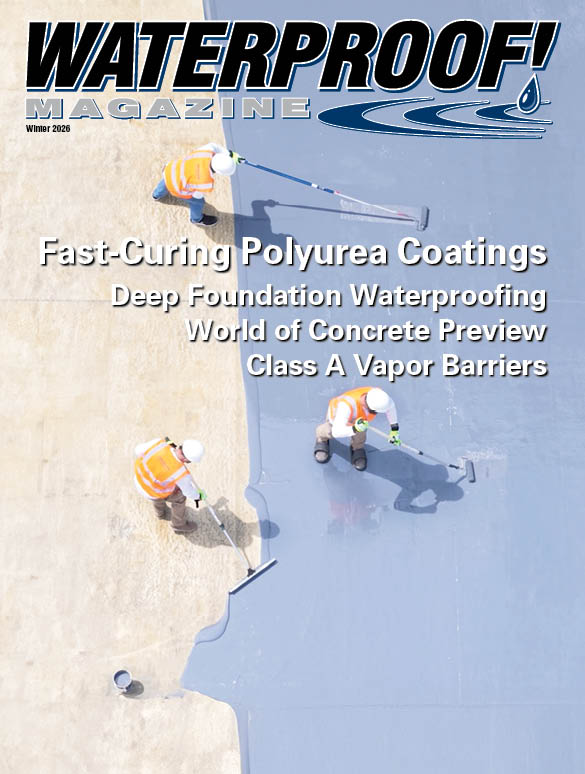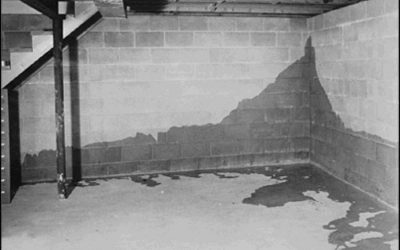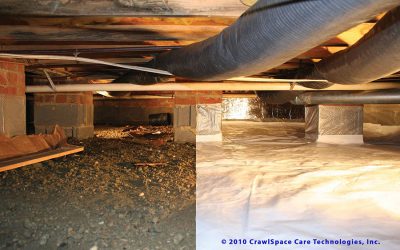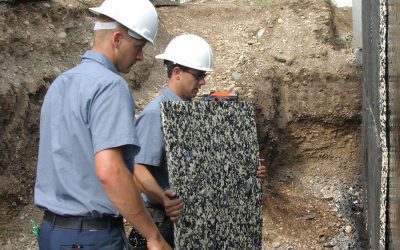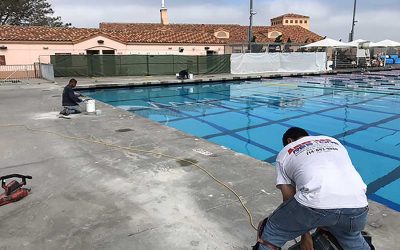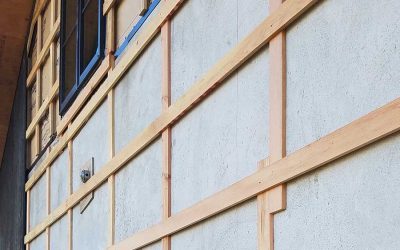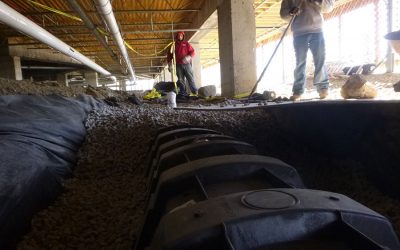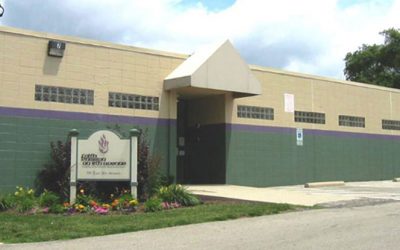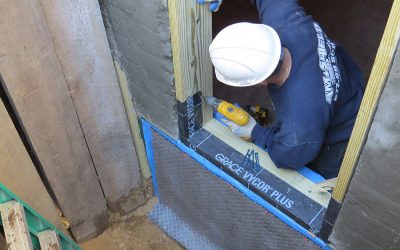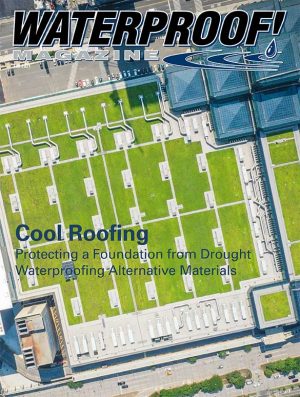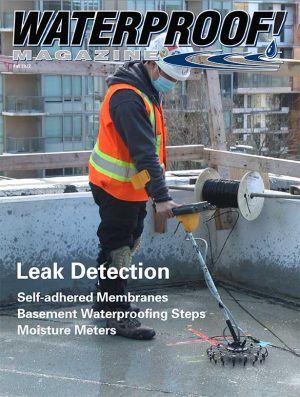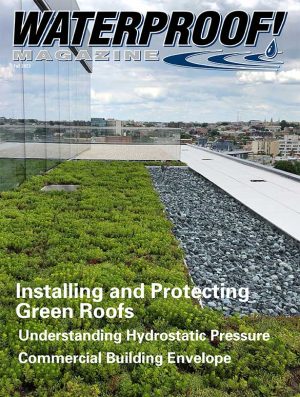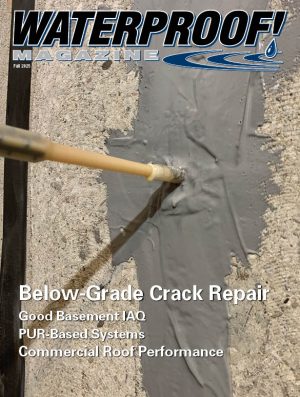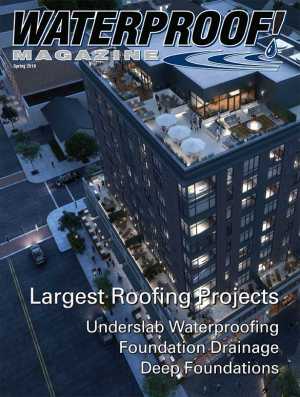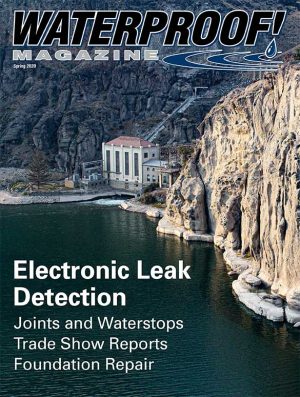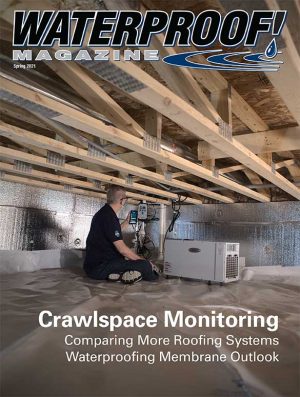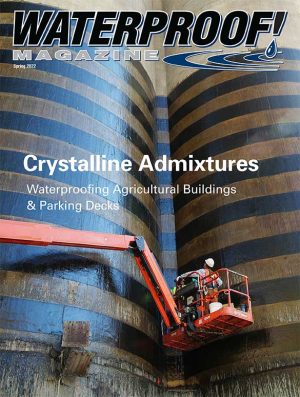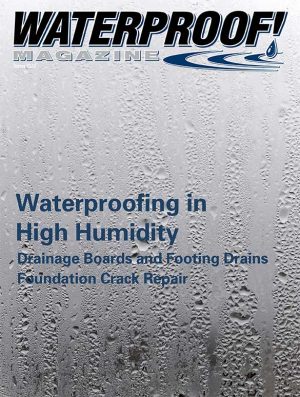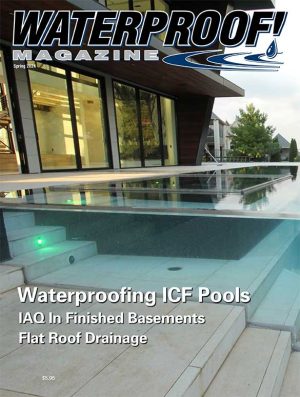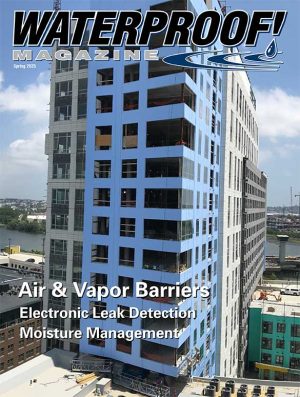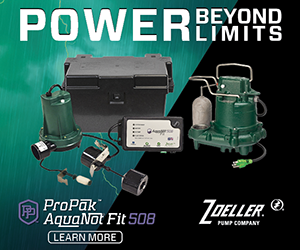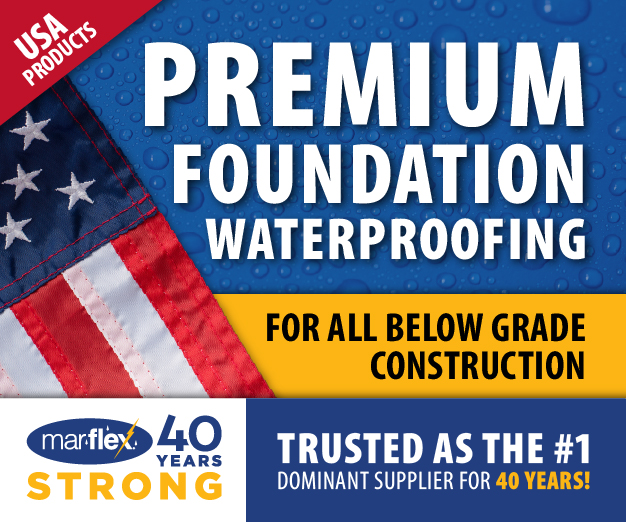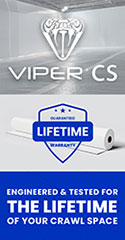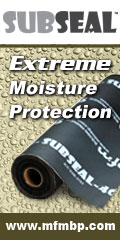Current Issue
The stories and features in the magazine are geared toward hardworking contractors and small business owners who need relevant information, written in plain English, applicable to his business and jobsite.
WATERPROOF! Magazine reaches virtually every segment of the waterproofing industry. Coverage includes:
Residential Below Grade – Spray-applied foundation sealants, self-adhered sheet goods, footing drain tiles, dimple membranes and sump pump systems, crack repair, carbon fiber straps, piering, basement finishing, crawl-space, mold remediation, and moisture management.
Commercial Above and Below Grade – Subway tunnels, wastewater treatment plants, all facets of commercial and industrial waterproofing, underslab barriers, crystalline admixtures, polyurea coatings, curtain grouting, waterstops, blindside, above-grade air barriers, joint sealants and more.
Commercial Roofing – Single-ply, built-up, and ballasted roofing, reflective cool roofing, electronic leak detection, vegetated “green roof” systems, and spray-on coatings.
In the Current Issue:
Residential Below Grade
Sealing Active Water Leaks
Water and moisture in the basement will considerably reduce the value of a home. That’s because moisture allows mold to grow, and the musty smell is not only unpleasant, but can also cause health disorders. Leaky foundation walls in commercial structures...
Crawlspaces & Sump Pumps
Sealed crawlspaces offer cleaner air, safer storage, and improved energy efficiency There’s a revolution happening underneath new homes. From encapsulated crawlspaces to internet-connected sump pumps technology is transforming how waterproofing contractors...
Basement Backfill and Drainage
Nearly all below-grade construction—commercial as well as residential—incorporates some sort of waterproofing layer. These membranes are a critical component for keeping basements and other below-grade spaces dry, but they’re only half the solution. In...
Commercial Above Grade
Case Study: Pool Deck Crack Repair
The American Restoration company out of San Francisco, California, was hired to repair a cracking concrete slab around a swimming pool. They had two concerns: First, they did not want this crack to re-open through their surface coating, and second, they were worried...
Waterproofing Alternative Construction Cobb, Straw, Wood Chip Block
By Vanessa Salvia Rain screen furring strips installed over plastered straw bale wall just before vertical siding is installed. Plant-based materials such as fibers made from straw, have been used as building materials for thousands of years. It wasn’t...
Cool Roofing
By Vanessa Salvia Just as wearing light-colored clothing on a hot, sunny day results in a cooler feeling on your skin, cool roofs can make any building feel more cool on a hot, sunny day. A cool roof is one that has been designed to reflect more sunlight...
Structural Repairs
Remedial Waterproofing
Dealing With Water Issues On Existing Buildings — By Melissa Morton Remediating the waterproofing and drainage for a New England hotel involved installing a 60-foot-long French drain under the hotel deck. Even though the beachfront hotel in Connecticut...
Commercial Carbon Fiber Repair
By Bob Thompson It has been nearly 15 years since carbon fiber first made its emergence into the civil engineering arena. Today, more and more structural engineers are using carbon fiber to design a variety of structural repairs. The most common use is retrofitting...
The Importance of Certified Installers
By Melissa Morton On many projects, the quality of waterproofing depends on the quality of the installer. Certification can bring peace of mind to the owner, and additional profits to the contractor. Those of us in the waterproofing industry understand...
Order Back Issues
Showing 37–48 of 75 results


